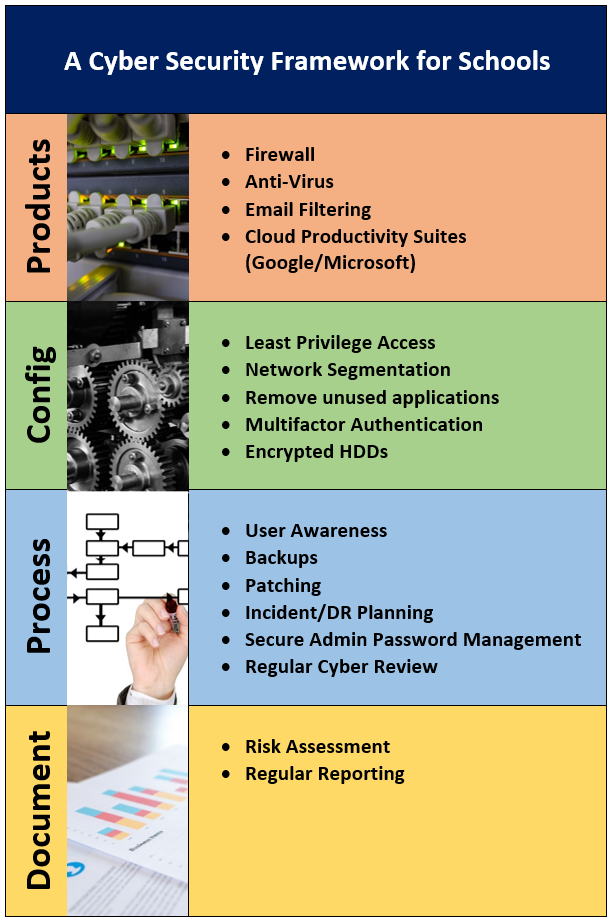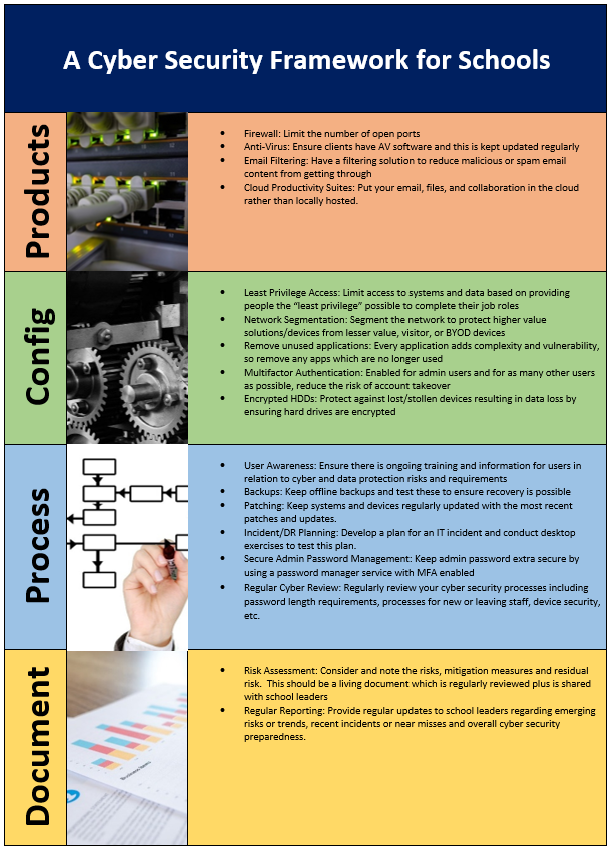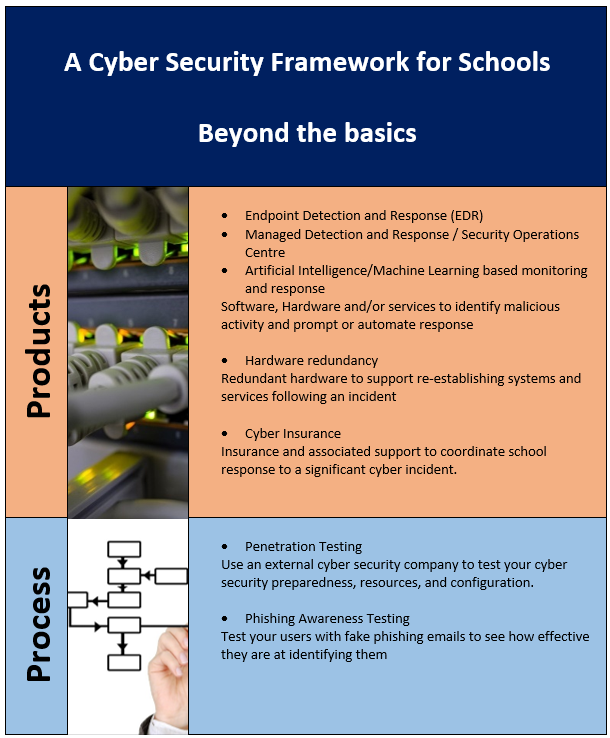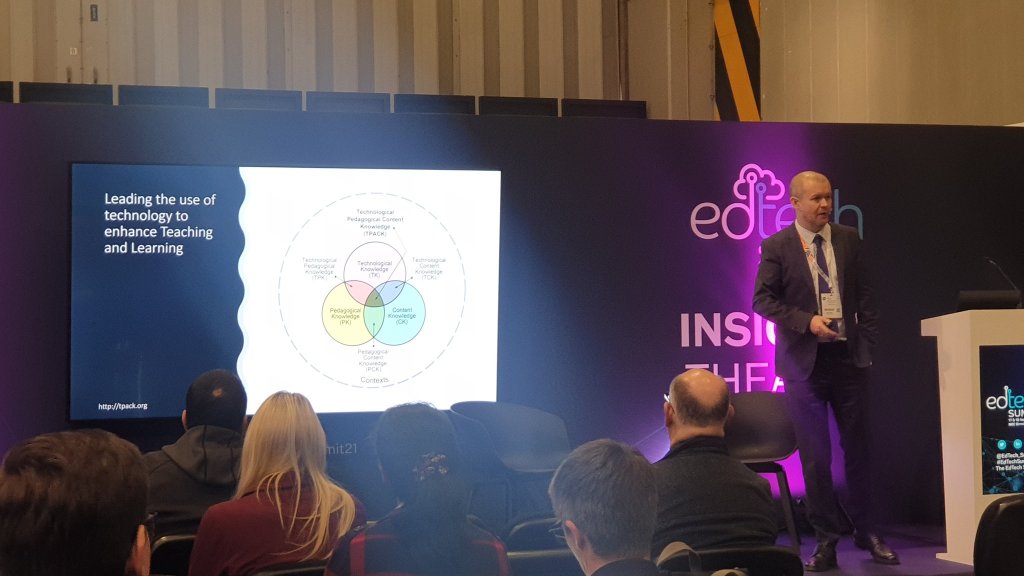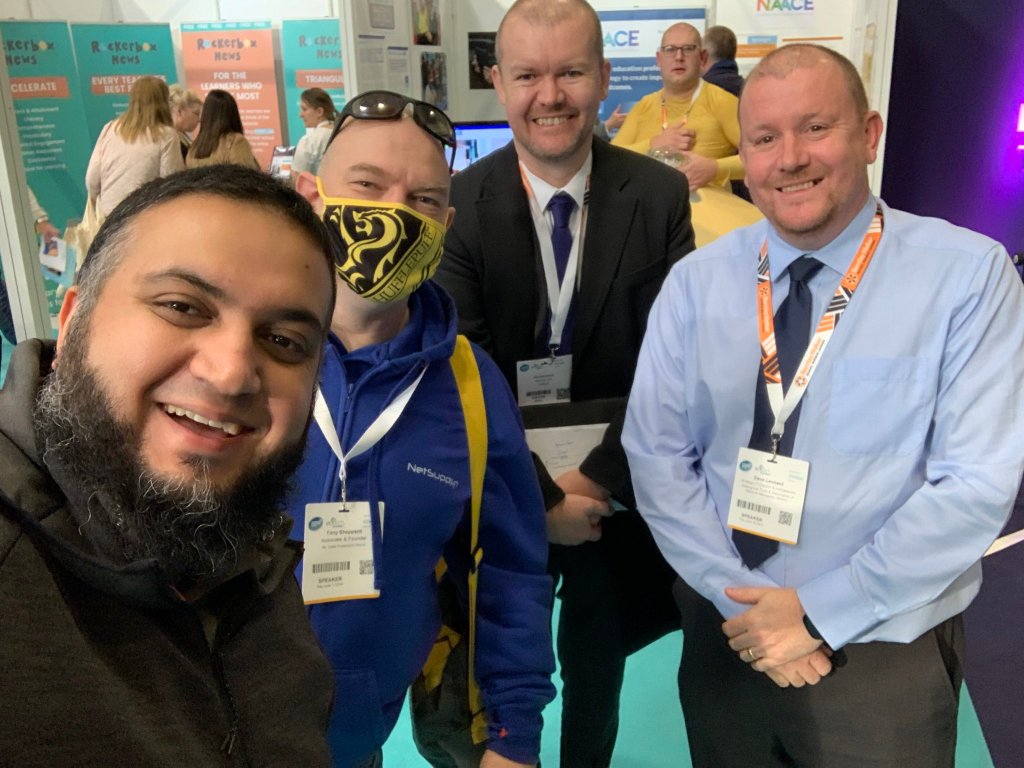And so the first term of 2021/22 has came to a close. As such I thought I would share some short reflections on the term. I am also going to share some reflections on the year as a whole in a later post, but for now I would like to focus on the term.
The first thing I will admit is that time has flown by. I can’t quite believe it is now the 19th December as I sit and write this, and that the first term of 2021/22 has already came to an end.
September 2021
As the start of the new academic year approached, the pandemic impacted on my IT services team, with a bit of a “pingdemic” resulting in a number of staff self-isolating, awaiting PCR tests. Thankfully everyone came back clear and this happened before the year began. This year saw me join the school Executive Group meetings. This should therefore help me in the ability to see what strategic decisions are being taken at an early stage. It will also help in giving me a forum to raise cyber security concerns at a senior staff level. I also contributed to The Access Group’s Access All Areas programme, delivering a talk on cyber security in schools.
September saw the first of the schools IT Management Group meetings, a meeting which I chair. The first meeting quickly showed how busy the start of term was, as I repeatedly called a member of staff the wrong name during the meeting. Clearly my head was a little bit turned. I was so embarrassed by this, and disappointed in myself.
October 2021
Stepped in to run one of the schools esports sessions given the normal staff member was self isolating. Had significant help from the technician on my team who has been great in getting everything setup and in supporting our esports provision. It was nice to once again get in amongst students playing competitive games, something I used to do some years ago when I worked in colleges. Following the session I have decided to explore running further sessions as part of the schools activities programme to try and support and grow our esports provision, with this hopefully starting in the new term, in January.
I also spent a reasonable amount of time this month discussing with individuals I wanted to join me on a conference panel session focussing on cyber security in schools. This included an ethical hacker, a representative from the NCSC and also a representative from the ICO among others. Sadly, the conference was later cancelled due to the ongoing challenges of the pandemic.
Related to the above I also spent time generating some short 4 or 5 minute videos focussing on Digital Citizenship and cyber security for use with staff and students. I have finally learned not to spend too much time getting videos perfect and not accepting minor errors or “ums” and “ahs”; The video just needs to be good enough. By accepting this I am now able to produce the required videos much quicker.
November 2021
Intermittent issues with the schools core network switches were a growing issue in November. The issue had started towards the end of September however progress to identify the issue and resolve had been slow, largely due to wanting to avoid downtime associated with more aggressive investigation of the issue. By November, the fact that the issue hadnt been resolved, may having been starting to give some people questions as to my competence, and I will admit I was beginning to worry too, however towards the end of the month this issue was considered resolved and I think the decision making, to avoid any more substantial downtime was proven to be the correct one. Often the only way we will know if IT decisions are correct is in the future when we look back, so decision making in the moment can be difficult and unclear.
For a while now we have been hearing of Wi-Fi issues in some school locations however the info which comes to us largely lacks the detail to allow us to investigate and diagnose the issue. As such I decided to take a different approach and started pulling data from our Wi-Fi solution on a hourly basis, to get a more general picture of its health. By the end of the month, we had significant volumes of data where the results, although not eliminating the existence of issues specific to a small minority of students, highlight that Wi-Fi generally functions well for the majority of students.
I visited the Schools and Academies Show in order to present at the co-located EdTech Summit event. The show itself was a little bit like a small version of BETT. The main benefit of the event for me was simply the ability to once again meet people in person, so gave me an opportunity to touch base with a number of ANME members among others. Sadly, as normal, my journey wasn’t without drama as I managed to get on the wrong train at one point! Normal service was resumed.
December 2021
A family issue took a fair part of…..no, actually, all of my focus, through a good part of December. This included a trip to A&E followed by 8 hours there including attempting to get some sleep while sat upright on a stool. Not the best experience.
Had also been exploring a possible Board level advisory position alongside my Director of IT position. The university concerned was looking for someone with a focus on cyber security so this seemed like an ideal opportunity for me however upon review they sadly decided that I wasn’t quite what they were looking for. I will admit that this disappointed me as the opportunity looked like it would be an ideal and slightly different challenge for me. As such I need to continue looking for whatever my next challenge might be.
Conclusions
It has been a busy and challenging first term. Combined with this I have had personal challenges to deal with plus some disappointment. I feel this has left me feeling a bit drained and down at times with Xmas music on the radio being the last thing I needed to be hearing, despite the fact it is now almost Xmas. Looking back, despite the challenges I have managed to progress through them and to achieve a number of things which I should be happy or even proud of. I think I need a break and to decompress, and that will be the main focus for the Xmas period. After this I should be ready to begin again, to begin afresh, when the spring term begins in January.
And so to all I wish a very Merry Xmas and all the best for the new year!


